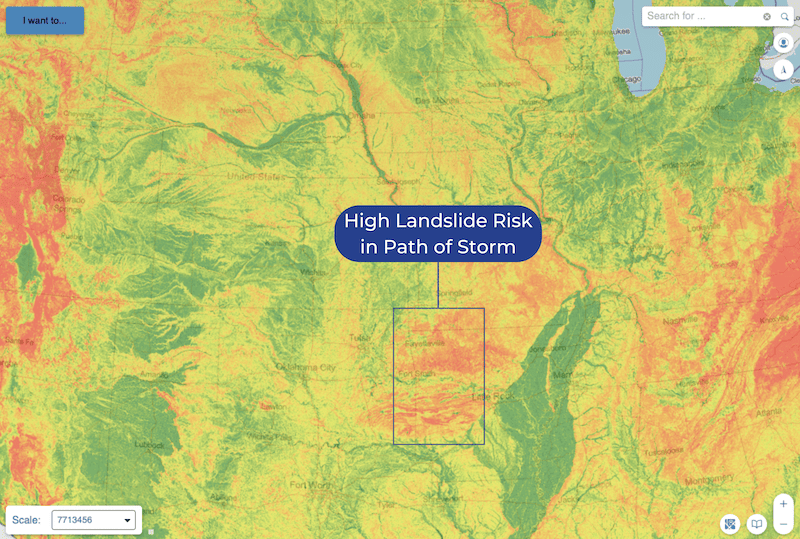Have you ever wondered what makes a grassy hillside stay put instead of sliding down into a big Dali-like pile at the bottom? This primer explains the fundamental dynamics of how vegetation, soil moisture, and infrastructure interact to influence the stability of sloped terrain. Careful land management is crucial for slope safety and preventing landslides.
Slope Stability

Slope stability refers to the ability of a sloped surface to withstand and resist failure and landsliding. Several factors influence slope stability, especially soil moisture, vegetation, and infrastructure installations.
There’s even an equation for this, as explained here by Teren’s VP of Product Kat Kraft in a recent Teren webinar on mitigating external force threats:
Trees and vegetation: keeping it all together below the surface

Trees and vegetation play a vital role in maintaining slope stability. Tree roots absorb excess water in the soil, reducing saturation. They also move water from the soil surface into the groundwater table via root channels. This drainage effect decreases soil moisture and increases soil cohesion – the ability of soil particles to stick together. Overall, the presence of trees enhances the soil’s stability and resistance to landslides.
Removing trees negatively impacts slope stability. With no vegetation, water takes longer to drain from the saturated soil. The remaining roots will still drain some water, but their ability fades as they decompose over time. The risk of landslides increases on a slope with no trees.
Infrastructure’s Affect on Slope Stability

Installing structures like pipelines can profoundly compromise slope stability. First, removing vegetation eliminates roots that previously drained water. Second, pipelines and trenches trap water flowing down the slope, increasing saturation.
Together, these effects significantly reduce the soil strength. Without proper stormwater control in places, the slope becomes highly vulnerable to catastrophic landslides and failure.
Big Data-informed Land Management is Key to Maintaining Slope Stability
Effective land management requires more than traditional methods; it demands the integration of big data analytics to ensure slope stability, especially in vulnerable terrains. By leveraging advanced geospatial data, predictive modeling, and real-time monitoring, land managers can make informed decisions to mitigate landslide risks and maintain the integrity of landscapes. These tools enable proactive identification of potential hazards, allowing for timely interventions that safeguard infrastructure and natural environments. As climate change intensifies and development encroaches on unstable areas, big data-informed strategies become essential for preserving slope stability and ensuring long-term resilience.
Check out how Teren safeguards slope stability with Terevue.
Watch the full video tutorial on Slope Stability:


How can Teren help you?
We'd love to hear from you.
- Ready to dive deeper? -
Knowledge Hub
White Papers
Webinars